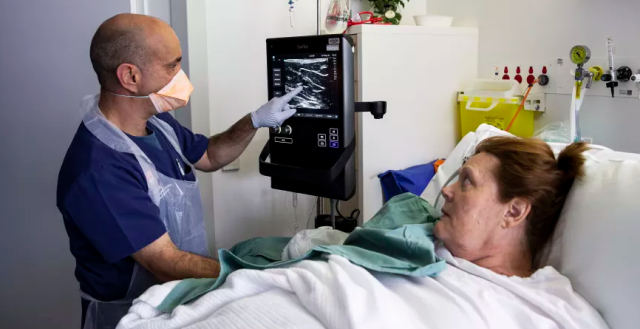
Any medical professional with hospital experience knows how crucial peripheral IV access can be. Getting fluids and medications into a critically ill or injured patient can make or break the effectiveness of their treatment.
At the best, a “difficult stick”—that is, a patient whose veins are difficult to insert a needle into—presents a problem that involves multiple needle pricks (with increasing pain after each attempt), frustrated and flustered medical staff, and a delay in treatment. At worst, a difficult stick can mean mounting medical complications as dehydration worsens; and the eventual necessity of a central venous line, which while very effective, carries its own set of risks.
A patient can be a difficult stick for any number of reasons, like dehydration, a history of intravenous drug use, or obesity. Underweight and premature infants are particularly difficult candidates for normal peripheral IV access because their veins are simply so small. Given the necessity and prevalence of peripheral IVs as a part of treatment, it’s no wonder that any solution that would make IV access easier would be eagerly adopted in almost any setting.
Bringing ultrasound-guided IV insertion to patients who qualify as a “difficult stick” is exactly what is happening at Liverpool Hospital in New South Wales, Australia. Spearheaded by Dr. Evan Alexandrou, a new protocol for limiting the number of failed IV insertion attempts is being adopted by other hospitals in the area.
In a paper published in BMC Nursing, Dr. Alexandrou said in 2016, 379 patients were referred to the hospital's after-hours clinical support team for the insertion of a catheter under ultrasound guidance. His analysis found that in 93 per cent of cases, the nurse was able to successfully insert a catheter on the first go. He also found the average pain score dropped from 7 out of 10, without the use of ultrasound, to 2 out of 10, after referral.
Continue reading at the Sydney Morning Herald.
Learn More About the Sonosite SII
Regional Anaesthesiologists have enthusiastically embraced the Sonosite SII for help visualising nerves and vascular anatomy while placing regional nerve blocks. Learn how the SII's enhanced image quality and touchscreen controls, combined with nerve exam presets for rapid scanning, make the SII an excellent choice for anaesthesiologists.


